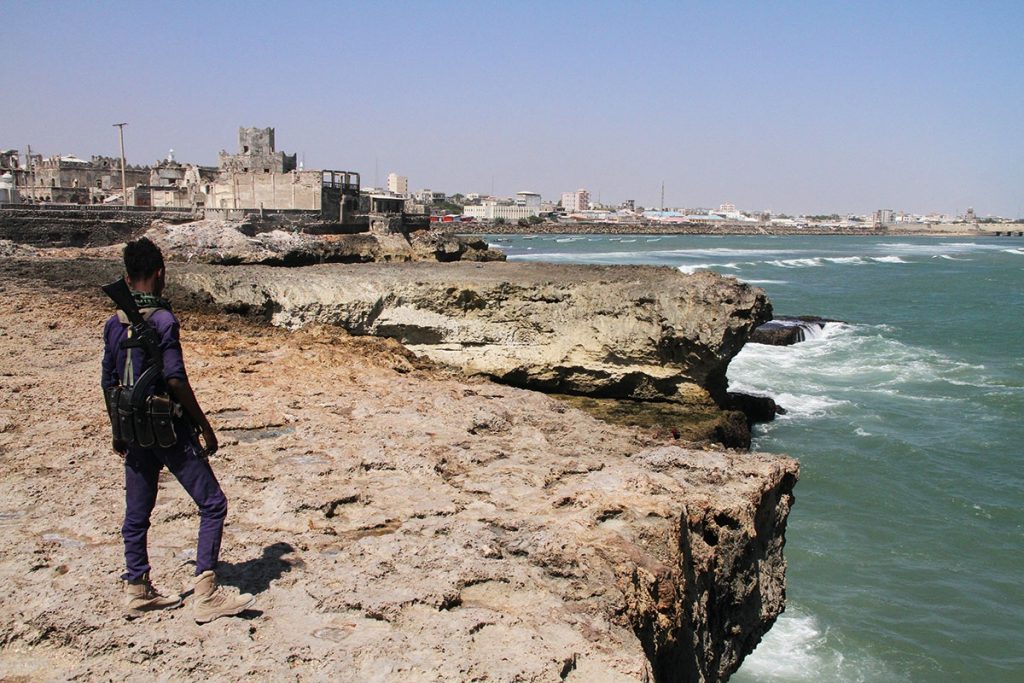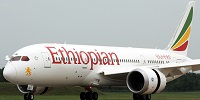by Nick Redmayne

In Mogadishu, the troubled capital of Somalia, tentative moves towards economic regrowth are evident, but the future remains far from certain
Joining the ebullient traffic of Mogadishu’s main road, Makkah Al-Mukaramah, we travelled in convoy with a security detail towards Kilometre 4, the city centre, and a highly recommended new coffee shop. Along the way, streams of motorised rickshaws jockeyed for position, but sensibly deferred to 4x4s carrying armed men. At fortified checkpoints, my driver, Diric, briefly stepped out of the car, simultaneously stuffing an automatic pistol down the back of his jeans and waving a benign salutation to nervous soldiers. He made eye contact and engaged in faux jocularity before proceeding steadily through concrete chicanes. In Mogadishu, you really have to want a good cup of coffee.
Somalia’s modern history, from its occupation by Italian and British colonial powers, is well documented. Independence following the Second World War saw a democratic construct falter and fail. Assassination, military coup, regional conflicts and a political vacuum nurtured the apocalypse born as 1991’s civil war. Estimates suggest that, to date, 500,000 people have died as a result of the conflict. Foreign intervention perversely catalysed the emergence of the ideologically driven Al- Shabaab militia, which allied itself with Al-Qaeda and grew to control much of the country. Somalia became the definitive failed state. However, in 2011, following advances by the African Union and troops supplied by the Transitional Federal Government (internationally recognised as the provisional government of Somalia from April 2004 until August 2012), Al-Shabaab fighters withdrew from Mogadishu and later lost control of all of the major provincial centres. In 2012, presidential elections were held for the first time since 1967 and the transitional government became the Federal Government of Somalia. The UN redrafted its description of Somalia to that of a ‘fragile recovering state’. In February 2021, I visited Mogadishu to judge for myself how much progress had been made.
Passing under the Arco di Trionfo Popolare (Arch of the People’s Triumph), an unattractive, concrete vestige of fascist-Italian colonisation that now doubles as an advertising platform, the streams of traffic divided. We turned off down a rough side street and pulled up outside a modern-looking shopfront. Here, 29-year-old Somali Najiib Abdullahi and his Canadian-Somali wife had opened a busy coffee shop.
 Young men claiming to be the coastguard gather near the waterfront. Image: Nick Redmayne
Young men claiming to be the coastguard gather near the waterfront. Image: Nick Redmayne
A graduate of Istanbul University, Najiib described his experience as a young entrepreneur in the Somali capital. ‘Ten years ago, this road was a frontline between Al-Shabaab and the government. When we came, there was nothing. You couldn’t drive here. The road was impassable. No-one believes we can have a business here.’ Yet despite this doubt, the returning diaspora, along with those who’ve been educated abroad, have been driving physical and economic reconstruction in Mogadishu. Instead of gunshots and sirens, the city’s soundtrack now seems to be the clatter of construction.
Najiib was helped by the fact that, for fearless investors at least, Mogadishu presents an opportunity for significant returns, but tales of altruism are also important. Najiib’s story had a little of both. ‘Everything was a challenge,’ he said. ‘The building was a shell and 90 per cent of our equipment had to come from outside. Most important, to have a coffee shop you need a bakery. We had none, so my wife cooked at home. Now she manages a bakery and together we employ 90 people.’ The high-ceilinged shop was fashionably furnished and cleverly lit, a kind of industrial urban chic. I asked if others had copied their success. ‘There was nothing on this street. Now there are six businesses, other coffee shops. I don’t care,’ he said. ‘We need more coffee shops, more nice things.’
Among a smartly dressed clientele, I listened to Najiib, sipped my cappuccino and munched a slice of banana bread – not a scenario most would associate with the world’s most dangerous city. ‘It’s a common feeling,’ said Najiib. ‘People want to do something good for Somalia.’
 The city’s Lido Beach offers a vision of a future that isn’t marred by regular deadly conflict. Image: Nick Redmayne
The city’s Lido Beach offers a vision of a future that isn’t marred by regular deadly conflict. Image: Nick Redmayne
I finished my coffee and offered Najiib a lift. He wanted to check the progress on a second new coffee shop. As we travelled, he asked what I thought about the city. I pointed to the four gangly youths of my security detail, legs hanging out of a ubiquitous Toyota pick-up, each gripping an AK-47. ‘It’s not normal, is it?’ said Najiib. I agreed, it definitely wasn’t.
Perhaps the most identifiable landmark in Mogadishu is its lighthouse, built in 1909 during Italian colonial occupation. Diric parked the Land Cruiser at the top of a switchback of worn stone stairs leading down to a sandy beach and a bay of blue water populated by open fishing skiffs. Worn and broken detritus from the modest fishing fleet lay strewn about. Men squatted, mending nets; others carried boxes containing a mixed catch. Odours, somehow less offensive by the sea, hung in the air.
However, here too was the corruption of life, a stark testament to that which Mogadishu has lost. The lighthouse itself lay in ruins, once-stuccoed walls pared down to crumbling stone. Overlooking the bay, a hotel, once a grand and ornate establishment, had been reduced to a blackened shell.
Abdi, my guide, lamented the sorry sight. ‘What you see now is from the civil war,’ he said. ‘It was the most expensive neighbourhood. There was even a nightclub, right there.’ I took photographs until an angry group of men in fatigues, some adorned with bandoliers of bullets, emerged. Claiming to be the coastguard, they demanded written authority for our presence.
 The battered lighthouse, Mogadishu’s most famous landmark. Image: Nick Redmayne
The battered lighthouse, Mogadishu’s most famous landmark. Image: Nick Redmayne
Mogadishu is still shattered. For the population, bombed-out streets have been normalised. However, the city’s Lido Beach was a reminder of a different life and a vision of future possibilities. Here, families walked along expanses of yellow sand and children played in the surf. Small boats plied the bluest of Indian Ocean water, offering pleasure cruises across the bay. Only a few years ago, the area was the domain of feral gangs, the sand littered with rubbish. As we ordered a lobster platter at a beachfront restaurant, Abdi recounted the time he had been forced to run for his life from a group of knife-wielding youths. ‘They chased me for over an hour,’ he said. ‘But now, on Thursday and Friday, it’s full of people. Beautiful.’
Elsewhere on Lido Beach, I climbed to the roof of the modern Elite Hotel, where views over the city take in the 19th-century Abdul Aziz mosque. Inland, across the road, a crumbling ruin was juxtaposed with a busy construction site. ‘It will be a new hotel,’ said Abdi. ‘The other building, the people, they died. I don’t know what will happen.’
Looking back along the coast towards the centre of the city, the immense structure of the Turkish Embassy compound reflected that country’s level of investment. As well as construction contracts, Abdi described significant numbers of Somali students taking advantage of places at Turkish universities, a soft-power initiative that benefits both countries. On cue, a young man joined us on the roof wearing a graduation gown and mortar board. A family friend busied himself taking photographs. Heading downstairs, chips in the blue wall tiles had been filled and smoothed with white plaster. ‘Bullets from Al-Shabaab,’ said Abdi. ‘About four months ago, they exploded a car bomb at the entrance. Others waiting invaded and shot who they could. In all, 11 guests died and 28 were injured. All five attackers were killed.’
Near the bombed-out shell of Mogadishu’s first parliament – an accusing finger of concrete stairwell pointing skywards and leading nowhere – was a tired, ceramic-faced obelisk inscribed with the words Milite Ignoto: the Unknown Soldier. The memorial dates from the Italian colonial period, but today the site known as Daljirka Dahsoon is revered by many Somalis and dedicated to the memory of all those who fought and died for the Somali Republic. Whether an upcycled fascist monument sends the right message is open for discussion. The city itself is a more significant reminder of lives lost.
CLAN STRUCTURE
The social and political structure of Somalia is commonly defined by the country’s four main clans: Darod, Hawiye, Isaaq and Dir. Many smaller sub-clans also exert influence and a dynamic making and breaking of allegiances is a constant feature of the country’s political landscape. At present, Somali elections, when they are held, don’t involve votes cast by the majority of ordinary Somalis. Instead, Somalia’s officially recognised Transitional National Government is led by a president chosen by MPs and senators, who themselves are appointed by delegates elected by clan leaders.
There are moments of respite to be found. In the Hamar Jajab district, behind sturdy steel doors, lies Beerta Nabadda, the Mogadishu Peace Park. Completed in 2016, the park is a sign of urban renewal, a green oasis of shrubs, flowers and shady trees. A café served cold drinks and gingery Dawood tea at tables set around the gardens. Here, I spoke to three young men armed with cameras not Kalashnikovs, making money by snapping shots of visitors for a couple of dollars. ‘Ah… you are older than me, you must sit,’ said one, passing me a plastic chair. I asked how they saw the city’s future. ‘I think things stay the same, not better, not worse,’ said one, his expectations tempered by experience.
At Hamar Weyne’s Mogadishu Mall, further urban renewal took the form of a two-storey temple to consumerism. Amid the trickle of fountains and whirring of escalators, brightly lit shops sold everything the average Somali doesn’t need. Also completed in 2016, the mall is tangible evidence of investment but also perhaps of a determination that economically, the only way is up.
Together, we sat outside at a smart café beside the mall. However, Diric was impatient to leave. He’d received another text message from AMISOM (the African Union Mission in Somalia) warning of a potential suicide attack. ‘There’s information that there are cars with explosives in the city already,’ said Abdi.
 Mogadishu is still battered from the years of civil war and ongoing fighting. Image: Nick Redmayne
Mogadishu is still battered from the years of civil war and ongoing fighting. Image: Nick Redmayne
Gentrification has broken out in parts of Mogadishu and no-one is complaining. However, the unruly heart of the city’s day-to-day commerce still takes place at Bakaara Market, a maze of dusty alleys within the Hawle Wadag district. Here, in 1993, two Blackhawk helicopters were shot down during a failed attempt by US forces to capture militia leader Mohamed Farrah Aidid. The ensuing bloody firefight became known as the Battle of Mogadishu and ultimately led to the departure of US forces from Somalia. As the civil war progressed, the market managed to adopt a nominally neutral status, allowing trade of all varieties to continue. That said, until 2011, Bakaara remained a redoubt for Al-Shabaab fighters. Today, although purveyors of illicit arms and counterfeit passports have gone to ground, violent crime makes Bakaara a no-go area, unless you have nothing to lose or no choice. ‘Even I do not feel safe in Bakaara. I can take you if we have an armoured car and more security,’ said Abdi.
From my fortress-like hotel not far from the airport, it was possible to make considered forays around Mogadishu. Ongoing construction was evidence of a growing level of confidence. International investment, notably by Turkey, together with that provided by the returning diaspora, did suggest an environment of opportunity. What’s less certain is whether Somalia’s political foundations have grown strong enough to maintain the progress.
When I visited in early 2021, the city was tense. President Mohamed Abdullahi Mohamed’s term had expired but new elections had failed to be scheduled. The day after I left, opposition demonstrations descended into exchanges of gunfire and rocket-propelled grenades.
Amid an atmosphere of recrimination, calm did eventually return to the streets, but many in Mogadishu continue to hold their breath. I still recall Abdi’s security mantra from our tours of the city: ‘We never visit anywhere twice.’ As Mogadishu rebuilds and tentative democracy is established, Somalia’s leaders, too, must work their hardest to avoid revisiting the past.
Source: Geographical


